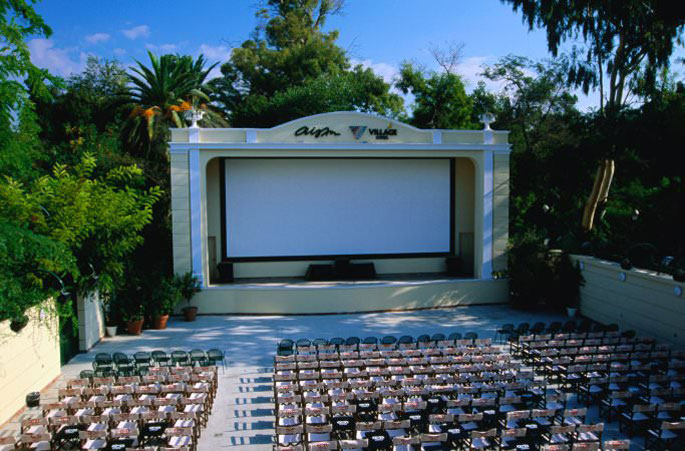 Formed after the liberation of Athens from the Turkish occupation, Exarhia was one of the first new districts established in the city. Located at the foot of Strefi hill, the district is bounded by Ippokratous, Kallidromiou, Bouboulinas and Solonos Streets.
Formed after the liberation of Athens from the Turkish occupation, Exarhia was one of the first new districts established in the city. Located at the foot of Strefi hill, the district is bounded by Ippokratous, Kallidromiou, Bouboulinas and Solonos Streets.
Previously known as Pytharadika, after the laboratories on the banks of the Kyklovoros River, the area later adopted the name of Exarhos, from a respected grocer from Epirus who ran his business here on Themistokleous Street for many years.
In the mid-19th century, the district was absorbed into the city’s urban planning, and began to develop rapidly. The area’s narrow streets, first built following the Revolution of 1821, were home to student riots in 1901 as well as major battles during World War II.
Today, due to its close proximity to both the University of Athens and the Technical University, the area is filled with students. Exarhia Square was developed around 1959 and features the Blue Building, the old Vox cinema, the Floral cafe and many other interesting landmarks.
Tailored to the students and scholars who live here, the district is also filled with bookstores, and press and publishing houses. Although the area has been somewhat neglected in recent years, its inhabitants and shop owners are making every effort to restore it to its previous character.
Source: www.athensattica.gr
 This prestigious district near the terminus of the metro line has always been one of the city’s most important commercial districts. Located 15 kilometres north-east of Athens, this suburb was established in the late 19th century as a countryside resort for the Athenian upper class.
This prestigious district near the terminus of the metro line has always been one of the city’s most important commercial districts. Located 15 kilometres north-east of Athens, this suburb was established in the late 19th century as a countryside resort for the Athenian upper class.
Since then it has become the preferred residential area of entrepreneurs, artists and statesmen. With a number of open green spaces and recreational sites like Kefalari and the Alsos Green, Kifissia offers a uniquely relaxing ambience.
At the Kifissia shopping centre, visitors will find the most famous brand names in clothing, shoes, cosmetics and accessories, as well as a wide array of luxury hotels, cafés, gastronomy and some terrific old taverns. Consider combining a leisurely stroll with some designer shopping and a bit of fine dining.
Source: www.athensattica.gr
Known in ancient times as Aixone, Glyfada was renowned for the red-mullet fishing off the coast. Located 15 kilometres southeast of Athens, the coastal suburb of Glyfada is one of the region’s major marketplaces. Lying parallel to the tram lines, the central commercial district is surrounded by a number of important businesses.
 In this stunning seaside locale visitors will find major shopping centres offering brand-name clothing, footwewar, cosmetics and accessories. Easily accessible by bus and tram, there are also a number of marinas available to serve visitors arriving by boat.
In this stunning seaside locale visitors will find major shopping centres offering brand-name clothing, footwewar, cosmetics and accessories. Easily accessible by bus and tram, there are also a number of marinas available to serve visitors arriving by boat.
Source: www.athensattica.gr
 Just a five-minute walk from the Parliament Building, Kolonaki Square is set in one of Athens’ oldest and most prestigious districts. Attracting a host of locals, tourists and business people, Kolonaki is the main hang-out for politicians, journalists and high society.
Just a five-minute walk from the Parliament Building, Kolonaki Square is set in one of Athens’ oldest and most prestigious districts. Attracting a host of locals, tourists and business people, Kolonaki is the main hang-out for politicians, journalists and high society.
With stores offering brand-name and designer products, Kolonaki Square is at the centre of Greece’s luxury market. Visitors will find all major couture brands and showrooms, as well as shops specialising in designer products, unique gifts, accessories and rare antiques. Take a break from shopping to savour some of the amazing culinary options, with something to please all tastes and pockets.
Source: www.athensattica.gr
 With a subway station conveniently located near its front entrance, the New Acropolis Museum contains the most important artefacts found on the “sacred rock.” Containing rare objects from the Mycenaean era to the Roman and early Christian ages, it is an absolute “must see” for visitors. Since Opening in 2009, millions of visitors have gazed in wonder at the Parthenon sculptures adorning its rooms. And, through the large overhead windows, visitors can simply look up to be overwhelmed by the sheer size and beauty of the ancient monuments towering above the museum.
With a subway station conveniently located near its front entrance, the New Acropolis Museum contains the most important artefacts found on the “sacred rock.” Containing rare objects from the Mycenaean era to the Roman and early Christian ages, it is an absolute “must see” for visitors. Since Opening in 2009, millions of visitors have gazed in wonder at the Parthenon sculptures adorning its rooms. And, through the large overhead windows, visitors can simply look up to be overwhelmed by the sheer size and beauty of the ancient monuments towering above the museum.
 Replacing the old museum that had operated since the 19th Century in the building complex adjacent to the Parthenon. the New Acropolis Museum displays its invaluable collection of ancient artefacts with a modern twist; Built on high pillars directly above the Roman era archaeological site, visitors can look down through the transparent floors to view these rare artefacts. It is worth noting that since many of the principal exhibits require special lighting conditions to insure their preservation, the museum uses a substantial amount of natural light for its illumination.
Replacing the old museum that had operated since the 19th Century in the building complex adjacent to the Parthenon. the New Acropolis Museum displays its invaluable collection of ancient artefacts with a modern twist; Built on high pillars directly above the Roman era archaeological site, visitors can look down through the transparent floors to view these rare artefacts. It is worth noting that since many of the principal exhibits require special lighting conditions to insure their preservation, the museum uses a substantial amount of natural light for its illumination.
Museum web site: www.theacropolismuseum.gr
Source: www.athensattica.gr
The Olympic Athletic Center of Athens bares the name of the first winner of the Marathon in the first modern Olympic Games in Athens in 1896, the notorious Spyros Louis, who in fact was a simple waterman from Maroussi. The construction of the premises started in 1978 and the main Stadium and the other installations were inaugurated four years later to house the European Athletics Championship in 1982.
The following years a number of other sport facilities surrounded the Main Olympic Stadium: the Olympic Velodrome (inaugurated in 1991), the Olympic Aquatics Center (1991), the Olympic Indoor Sports Center (1995), the Olympic Tennis Center (2004), as well as other supplementary sport facilities. The Olympic Athletic Center of Athens is a state-of-the-art sports facility, which greatly promoted sports activities in Greece. The facilities were finalised in 2004, with the redevelopment additions by the Spanish architect Kalatrava, and the Stadium hosted the Athens 28th Olympic Games in 2004.
OAKA web site: www.oaka.com.gr
Source: www.athensattica.gr
Ermou Street is a thriving pedestrian destination with a great history. Combining modern commercial activity with the function of an old town main street, the Ermou pedestrian street starts to the west of Syntagma Square and leads to Monastiraki. Its bustling sidewalks are lined with large stores, boutique designer shops, little snack-bars, coffee shops, and, of course, people.
Located approximately in the middle of the pedestrian street is the historic 11th Century Kapnikarea, with its beautiful murals by Fotis Kondoglou. Ermou street is considered to be the most frequented — and most expensive commercial street in Greece.
Source: www.athensattica.gr
The Jewish Museum of Greece was founded in 1977 by the Jewish Community of Athens. Housed in a room of the Synagogue on Melidoni street, this small museum contains objects that survived World War II; objects from the everyday lives of Greek Jews, mostly small works of art, historic documents and heirlooms. A large part of the original collection were items seized by the Bulgarians in Salonika, and returned to Greece by the Bulgarian Government after the war.
 Over the years, a large volume of material was collected; rare editions of books, valuable fabrics, jewelry, religious and ornamental vessels, and simple, everyday objects. When the ever-increasing volume of exhibits demanded new, larger premises for the museum, the curators rented a floor in a building on Amalias street, which is now open to the public.
Over the years, a large volume of material was collected; rare editions of books, valuable fabrics, jewelry, religious and ornamental vessels, and simple, everyday objects. When the ever-increasing volume of exhibits demanded new, larger premises for the museum, the curators rented a floor in a building on Amalias street, which is now open to the public.
In 1989 the museum became a legal entity, administered by a seven-member council. In the 1990’s the museum’s current location on 39, Nikis street, was purchased and restored, and the museum moved in permanently.
Museum web site: www.jewishmuseum.gr
Source: www.athensattica.gr
In the late 1920s, architects E. Lazaridis and E. Dimitriades Rok designed the Monument of the Unknown Soldier. The relief figure on the marble tomb was sculpted by famed artist, Konstantinos Dimitriades. During the initial phases of its construction, prior to its final placement, extensive excavation was undertaken in front of the Parliament building, lowering the ground level by approximately 6 metres, to the level of Amalias avenue.
Heavily influenced by the archaic art style, the monument is strictly minimalist in design, its only modernist decorative elements being the bronze shields. The monument is guarded day and night by the Presidential Guard of Evzones, and is where officials dedicate wreaths in honour of the Unknown Soldier.
Source: www.athensattica.gr
The Egli Cinema is perhaps the oldest cinema still in operation in Athens. Opened in the early 20th Century, following a civil war and World War I, it is located on the premises of the “Egli Beer Restaurant,” which opened in 1904. The theatre’s close proximity to the Zappeion Mansion and its gardens, helps to augment this picturesque section of old Athens. The cinema, now part of the large Egli multiplex, with its restaurants, bars, coffee-shops, and event venues, is considered by summer cinema lovers, to be one of the best places for entertainment in Athens.
And, though located in the very center of Athens, it is virtually free from the usual noise associated with bustling cities. Surrounded by lush greenery, complemented by the perfume of summer flowers, it even has a “private” veranda, from which, you can watch your favorite movies, while enjoying a great dinner.
Cinema web site: www.aeglizappiou.gr
Source: www.athensattica.gr
















